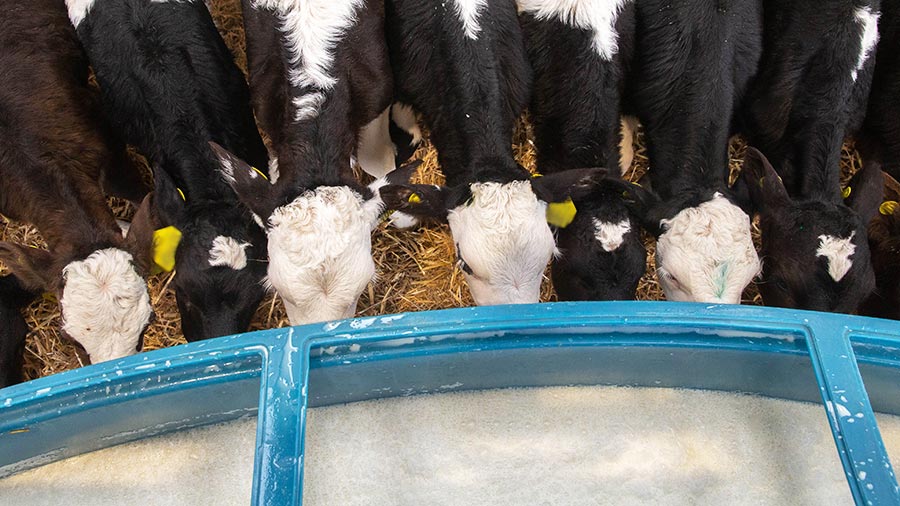Calves fed more milk make resilient cows
 © Tim Scrivener
© Tim Scrivener Feeding more milk to dairy calves to achieve faster growth rates is no longer just a management technique.
Dairy farmers need to rethink their calf rearing, because feeding more than the traditional two litres twice a day, weaning later, and rearing calves in pairs or groups are all essential to meet the biological needs of the calf.
This was the message from scientists speaking recently at Trouw Nutrition’s third calf symposium. They agreed these methods are the way to produce a resilient and sustainable dairy cow.
Heifer rearing objectives a decade ago focused on growth, lean animals and early weaning, said Trouw’s head of ruminant research, Dr Javier Martin-Tereso.
Yet he said that a lean calf at weaning does not produce more milk as an adult.
See also: Why feeding more milk to calves is more cost-effective
The goals have now shifted and today welfare is top of the list of priorities, which means meeting the biological needs of the calf including:
- Colostrum
- Health
- Peer and maternal contact
- Ad-lib milk
- Bovine milk composition
- Gradual weaning.
However, Javier reported a survey of British dairy farmers that confirmed 65% still feed less than six litres of milk/day a calf.
Prof Nina Von Keyserlingk, from the University of British Columbia, argued that caring for the calf means feeding it more milk.
“Restricted feeding causes them to suck another calf because they are hungry,” she said, adding that calves have a biological need to suckle. This is why teat feeding is better.
Rearing in groups
Milk drunk from a bucket “disappears in 45 seconds”, said Nina, while a teat stimulates and satisfies natural suckling behaviour, generating saliva, which neutralises gut acidity.
Trials have also shown the importance of rearing calves socially, as they can adapt to new situations (whereas individually reared calves cannot). This is important for future herd life, she said.
“While efforts can be made to meet its biological needs, the difficulty is in measuring a calf’s emotional state. Often, the term ‘environment enrichment’ sounds like something is added if we have a bit of cash.
“Instead, we should talk about well-resourced pens, giving the calf what it needs,” she added.
Research shows that meeting the calf’s biological needs in early life switches on the calf’s signals to develop metabolism and lifetime productivity.
“Every step taken to meet the calf’s biological needs results in a fantastic response – short and long term – and benefits the calf.
“She is more likely to stay in the herd and be more productive. There is a return on investment,” said Javier.